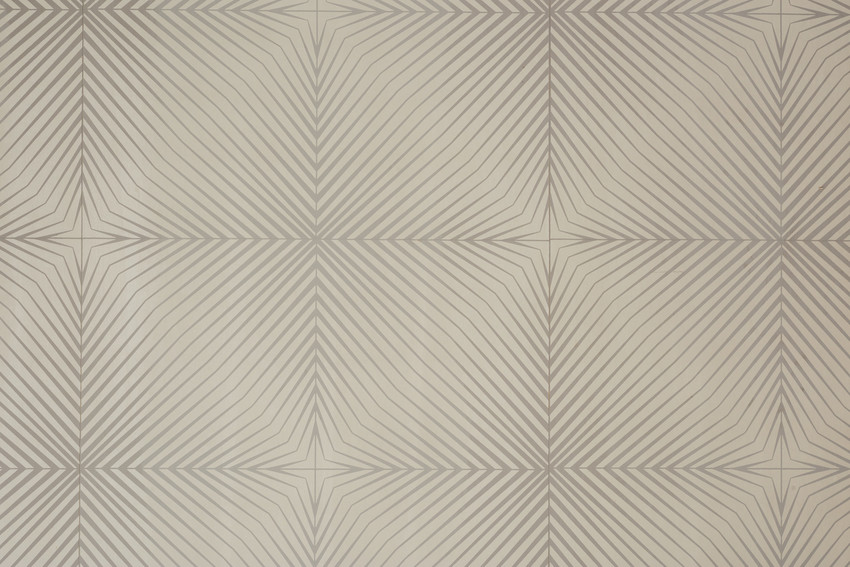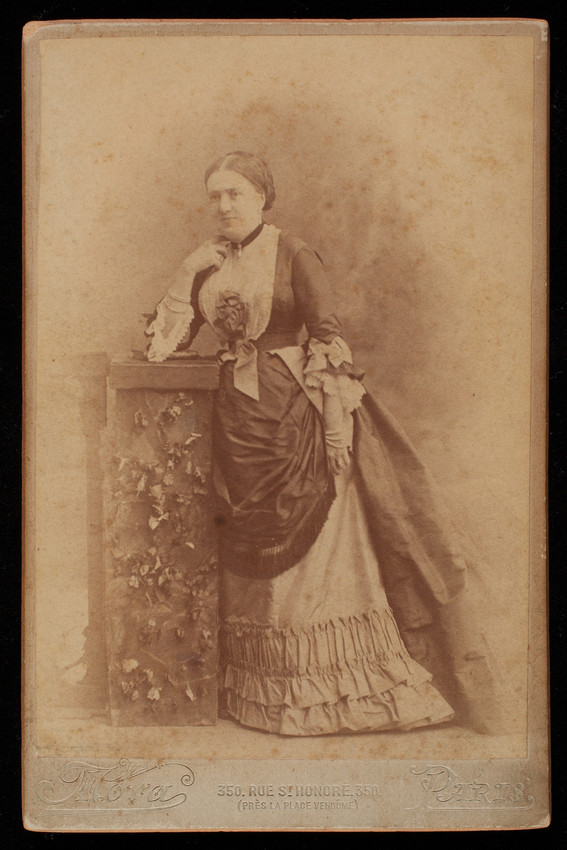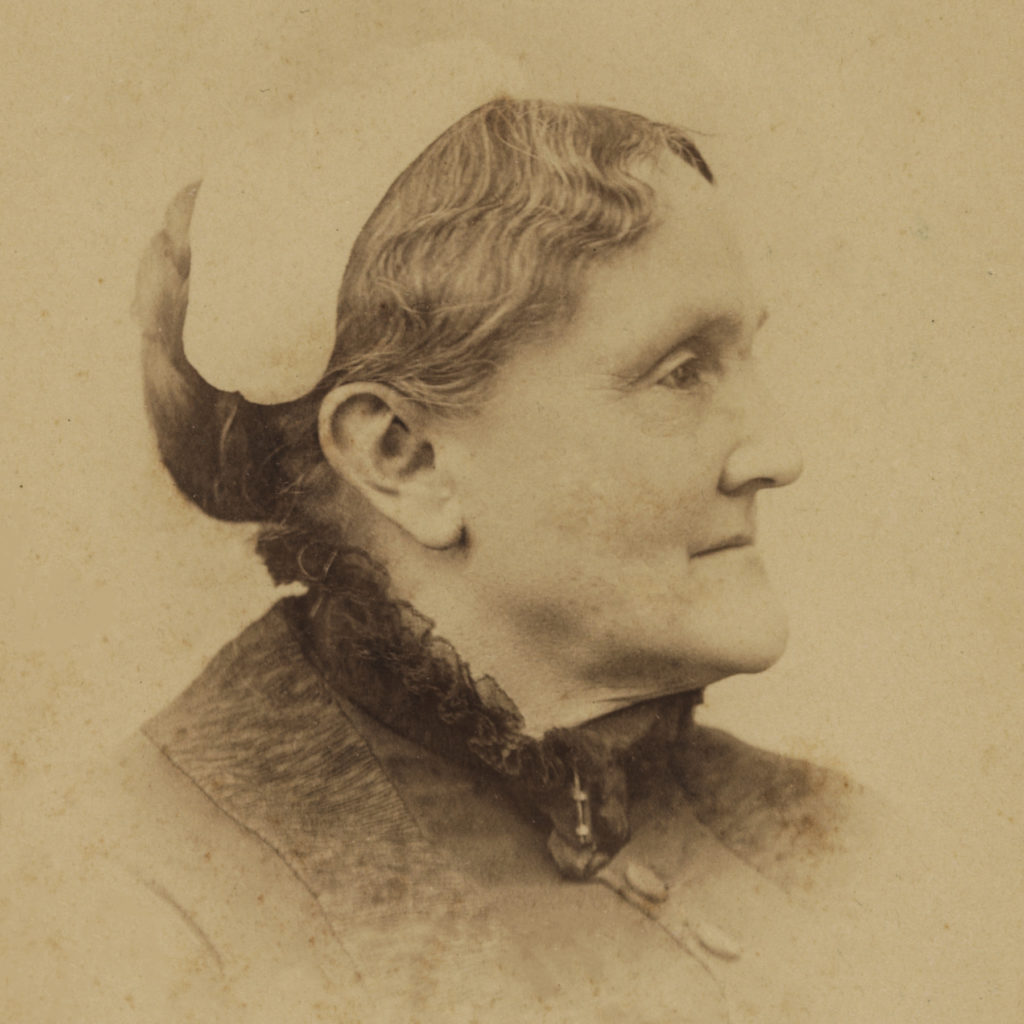 Sarah Orne Jewett House
Sarah Orne Jewett House
Guest Room

 The guest room in Sarah Orne Jewett’s home would have been much used in her day. Friends were central to Sarah’s life, and modern travel by railway made out-of-town visits relatively convenient.
The guest room in Sarah Orne Jewett’s home would have been much used in her day. Friends were central to Sarah’s life, and modern travel by railway made out-of-town visits relatively convenient.
Sarah herself makes mention of staying in this room for a time, during the declining health of her last years. It may have been easier to care for her in this bright and easily accessed space than her own room.
Guest Room Wallpaper
To anyone who lived through the 1960s, this wallpaper seems remarkably modern. And yet papers like this that suggest an optical illusion were surprisingly popular in the early years of the nineteenth century. This is a reproduction of the paper that was installed in one of the bedchambers, probably in the 1820s by Sarah and Mary’s grandfather. It remained on the walls throughout their lives.
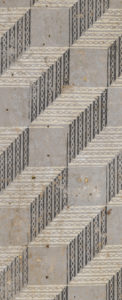
This is a slightly earlier example of another paper in Historic New England’s collection that also has an optical design.
George Sand
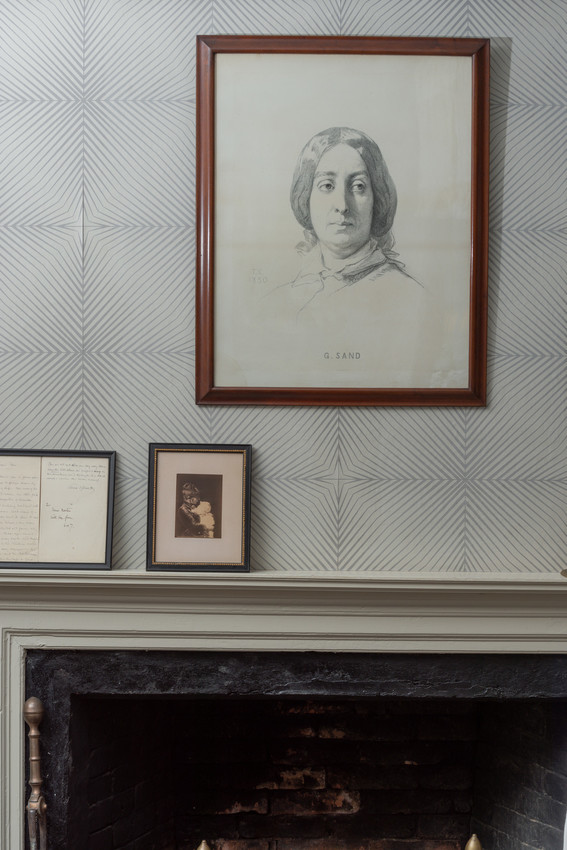
From its prominent location over the mantel in the guest room, the portrait of George Sand (1804-1876) suggests what an important role model the author was for Jewett. For much of the nineteenth century Sand was the most popular author in France, male or female. Considerably older than Jewett, Sand affirmed for Jewett that women could have successful careers as writers. Sand’s penchant for wearing men’s clothing or dipping into streams fully dressed must have appealed to Jewett’s own playfulness.
Sarah Wyman Whitman
Painter, book cover designer, and stained-glass artist, Sarah Wyman Whitman (1842-1904) became one of Jewett’s closest friends. She lived on Mt. Vernon Street in Boston, close to Annie Fields’ Charles Street home where Jewett lived part of the year, and she was a frequent visitor to Jewett’s South Berwick home.
Sandpiper: Celia Thaxter
Poet and writer Celia Thaxter (1835-1894) became close to Sarah Orne Jewett through Annie Fields, Thaxter’s dear friend and mentor. Annie and James T. Fields had introduced Thaxter to the New England literary scene.
Thaxter achieved widespread popularity in her work, becoming the most widely read female poet during the second half of the nineteenth century.
Like that of Jewett, Thaxter’s work reflects a deep connection to nature, particularly birds and wildlife, and flowers. Her flower gardens were legendary and became the source of her most enduring work, An Island Garden.
Unlike Jewett, Thaxter wrote “in between,” as many women writers and artists have for centuries, caring for an invalid husband, one troubled child and two others, a mother who was ill, and on top of it all, running a hotel on Appledore Island to pay the bills.
Sara "Sally" Norton
“…One feels how easy it is for friends to slip away out of this world and leave us lonely. And such good days as you have had are too good to be looked for often. There is something transfiguring in the best of friendship.” Sarah Orne Jewett (Letter to Sara Norton, September 3)
Sara “Sally” Norton was of the Boston elite, the eldest daughter of Harvard art professor Charles E. Norton and niece of James Russell Lowell, the founding editor at The Atlantic Monthly.
She was invited to 148 Charles Street and Gambrel Cottage with some frequency. Sally Norton also visited Jewett’s South Berwick home. Jewett visited the Nortons at their Cambridge home Shady Hill and at their vacation residence Ashfield, in the Berkshires.
